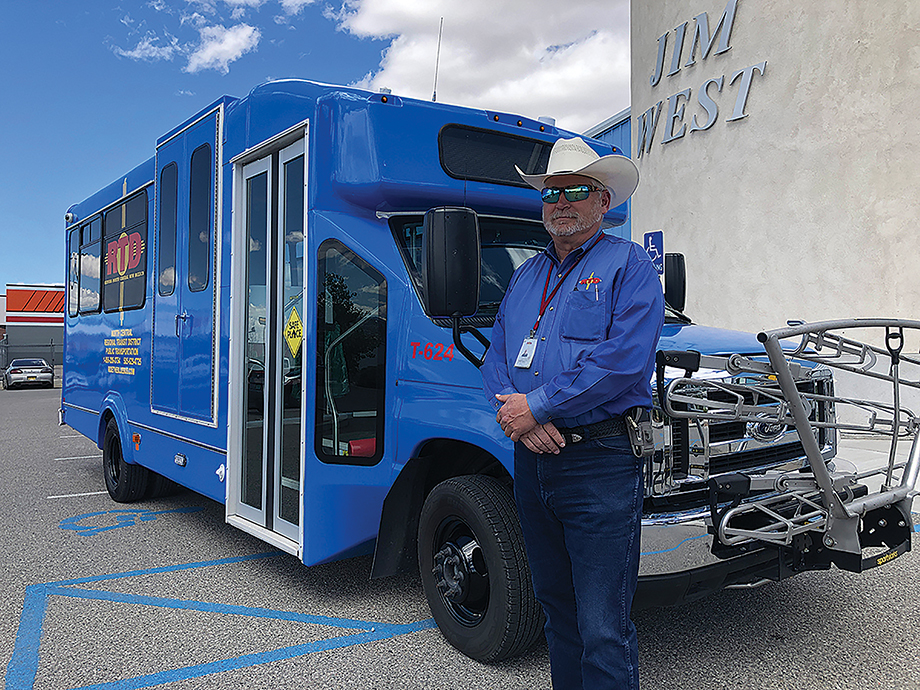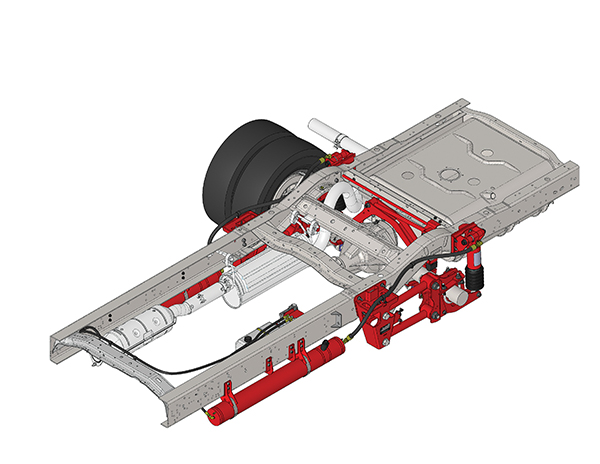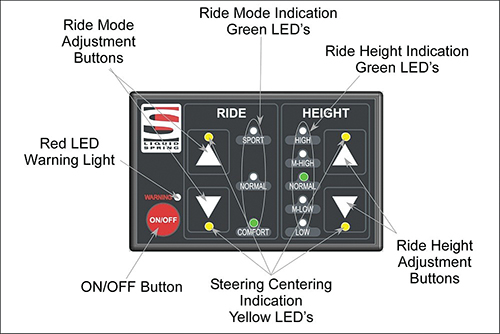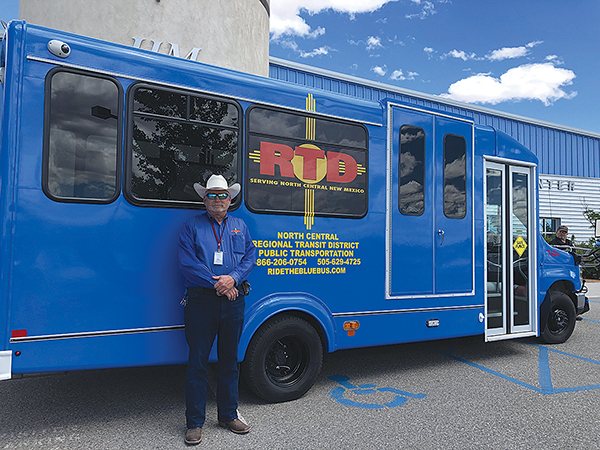
![]()
While attending the 2017 Transit Bus Summit in Stone Mountain, Georgia, Delilah Garcia, transit and facilities operations director for New Mexico’s North Central Regional Transit District (NCRTD) attended a seminar on suspensions conducted by LiquidSpring LLC. Following that session, Garcia had a short meeting with LiquidSpring representatives where they touted the benefits of the proprietary suspension system – specifically, that it reduces road vibration by 45 percent and body rock by 50 percent.
She expressed interest, and a few months later Travis Ward, national bus sales representative for LiquidSpring, brought the company’s touring demo bus to New Mexico. Garcia put him in touch with David Funck, NCRTD fleet and facilities maintenance manager.
“David’s exact words to me were, ‘I’m really not interested in seeing another salesperson today,’” Ward recounted.
Funck, having worked in the automotive and fleet industries since 1982, was wary of salespeople making grandiose claims about the savings and benefits their products offered.
“Many so-called fancy products sold to transit agencies end up being money pits with no true value,” Funck said. “So, quite frankly, when I had a person showing up with the latest and greatest suspension system, to say I was skeptical would be an understatement.”
NCRTD is a rural New Mexico transit agency which services an area of 10,079 square miles, including the counties of Los Alamos, Taos. Rio Arriba and Santa Fe, eight native Pueblos and the Jicarilla Apache Nation. One route even extends through San Juan county. As such, Ward, Funck and an NCRTD driver took the demo bus equipped with the LiquidSpring suspension on a drive through Española.
Funck said that on the very first right-hand turn of their drive, the bus did not sway or lean at all. From that and the smooth ride that followed, he said he knew that this suspension system was dramatically different than any he had ever worked with.
“At the end of that test drive, I told Travis that I wanted to partner with LiquidSpring,” Funck said. “We think of NCRTD as the leader in New Mexico transit. With that in mind, this was a smooth ride which we wanted to provide to our riders and community.”
 LiquidSpring Suspension
LiquidSpring Suspension
LiquidSpring’s proprietary Suspension System product is tailored for shuttle buses, ambulances, RVs and military vehicles.
It is a “smart” suspension system, so it features an on-board processor which automatically adjusts the suspension based on the terrain its traveling over. The system keeps the ride soft and smooth over rough roads, then automatically stiffens on sharp turns, cornering and emergency maneuvers.
Drivers can adjust ride modes, alter suspension heights, and respond to system issues via an interactive driver interface.
“So much engineering and science goes into the final product — a more reliable suspension with softer, riding and better handling,” Carl Harr, director of sales and marketing at LiquidSpring, said. “The reduction in vibration induced to the chassis translates to less maintenance, and thus more reliability over time. And ultimately that means less fatigue and better health for drivers and passengers.”
Testing the suspension system
Funck installed the LiquidSpring system immediately on one of NCRTD’s buses, and the rest of the agency’s staff — up to the executive director — quickly fell in love with the smooth, balanced ride.
From there, LiquidSpring and NCRTD embarked on a comparative study using the LiquidSpring suspension. For the past eight months, NCRTD has run a bus with the LiquidSpring system on the same route as a (nearly identical) bus using the agency’s previous suspension system.
“One bus starts in the morning at the north end of town, and the other starts at the south end of town, and they chase each other on a circular route all day,” Funck said. “It’s two buses running the same route on the same roads, with the same pot-holes, and so on.”
The buses were both brand new when the study started, and Funck plans on it being a long-term study.
“I don’t want to make any hard statements until we get more empirical data three to five years out,” he said. “Based on our preliminary findings, I would not be surprised to find up to a 60 percent decrease in ride vibration over time.”
 Outfitting the fleet
Outfitting the fleet
Having self-financed the relationship with LiquidSpring until that point, NCRTD subsequently ordered six news buses and retrofitted each with the LiquidSpring suspension, now utilizing Federal Transportation Administration (FTA) 5339 Grant dollars administered by the New Mexico Department of Transportation (NMDOT).
Furthermore, NCRTD has another seven buses ordered and plans to equip them with the suspension before they leave the factory.
“The NMDOT saw the benefits that NCRTD were realizing with the system,” Ward said. “They saw that their current bus suspensions were not meeting required lifetime lengths, and wanted to go about improving their fleets immediately.”
Drivers and maintenance techs react
Funck said that some drivers who have used the suspension system have approached him about being “favorably” placed on a route using one of the LiquidSpring-equipped vehicles, citing the vehicle’s smooth ride and enhanced maneuverability.
“On routes like the one from Chama to Farmington, drivers like the system because it rides better and, on windier days, there is little to no rocking,” he said. “In the end, driver fatigue is less because the drivers don’t have to fight the bus in a windstorm — because the bus suspension is helping them keep straight and low.”
 “When we put LiquidSpring on a bus, it drives more like a passenger car,” Ward added. “The driver now feels like they have complete control of the vehicle and it’s going where they point it.”
“When we put LiquidSpring on a bus, it drives more like a passenger car,” Ward added. “The driver now feels like they have complete control of the vehicle and it’s going where they point it.”
The buses not equipped with LiquidSpring require more maintenance thus far, Funck said, due to required routine tightening of screws, nuts and bolts. It is only a nominal cost, but worth noting because the LiquidSpring system has had no failures or required maintenance since the agency’s trial began.
More than anything, Funck said, the suspension represents an enhancement for driver and passenger safety, comfort and overall happiness at NCRTD.
“The main thing our passengers will take away after riding on a bus is the quality and smoothness of that ride,” Funck said. “With this system, they are seeing that the quality is noticeably improved. That alone has made it worthwhile for NCRTD to put its best effort into improving ride quality for everyone who rides our buses.”
